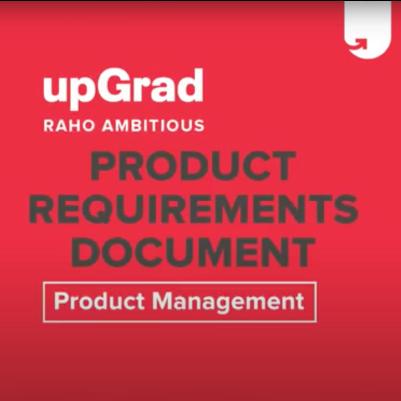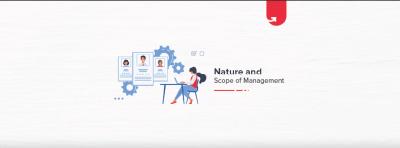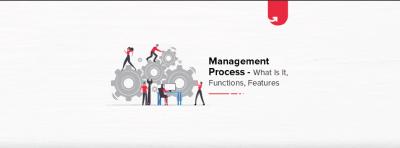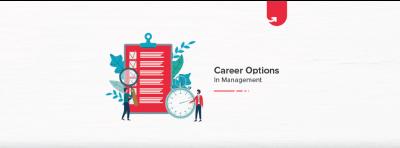Working professionals
Domains
Doctorate
Artificial Intelligence
Data Science
Gen AI & Agentic AI
MBA
Marketing
Management
Education
Project Management
Machine Learning
Doctorate
For All Domains
IIITB & IIM, Udaipur
Chief Technology Officer & AI Leadership ProgrammeSwiss School of Business and Management
Global Doctor of Business Administration from SSBMEdgewood University
Doctorate in Business Administration by Edgewood UniversityGolden Gate University
Doctor of Business Administration From Golden Gate UniversityRushford Business School
Doctor of Business Administration from Rushford Business School, SwitzerlandGolden Gate University
Master + Doctor of Business Administration (MBA+DBA)Leadership / AI
Golden Gate University
DBA in Emerging Technologies with Concentration in Generative AIGolden Gate University
DBA in Digital Leadership from Golden Gate University, San FranciscoArtificial Intelligence
Degree / Exec. PG
IIIT Bangalore
Executive Diploma in Machine Learning and AIOPJ Global University
Master’s Degree in Artificial Intelligence and Data ScienceLiverpool John Moores University
Master of Science in Machine Learning & AIGolden Gate University
DBA in Emerging Technologies with Concentration in Generative AIExecutive Certificate
IIITB & IIM, Udaipur
Chief Technology Officer & AI Leadership ProgrammeIIIT Bangalore
Executive Programme in Generative AI for LeadersupGrad | Microsoft
Gen AI Foundations Certificate Program from MicrosoftupGrad | Microsoft
Gen AI Mastery Certificate for Data AnalysisupGrad | Microsoft
Gen AI Mastery Certificate for Software DevelopmentOffline Bootcamps
upGrad
Data Science and AI-MLData Science
Degree / Exec. PG
O.P Jindal Global University
Master’s Degree in Artificial Intelligence and Data ScienceIIIT Bangalore
Executive Diploma in Data Science & AILiverpool John Moores University
Master of Science in Data ScienceExecutive Certificate
upGrad | Microsoft
Gen AI Foundations Certificate Program from MicrosoftupGrad | Microsoft
Gen AI Mastery Certificate for Data AnalysisupGrad | Microsoft
Gen AI Mastery Certificate for Software DevelopmentupGrad | Microsoft
Gen AI Mastery Certificate for Managerial ExcellenceupGrad | Microsoft
Gen AI Mastery Certificate for Content CreationOffline Bootcamps
upGrad
Data Science and AI-MLupGrad
Data AnalyticsGen AI & Agentic AI
Gen AI & Agentic AI
IIIT Bangalore
Executive Programme in Generative AI for LeadersMasters

Paris School of Business
Master of Science in Business Management and TechnologyO.P.Jindal Global University
MBA (with Career Acceleration Program by upGrad)Edgewood University
MBA from Edgewood UniversityO.P.Jindal Global University
MBA from O.P.Jindal Global UniversityGolden Gate University
Master + Doctor of Business Administration (MBA+DBA)Executive Certificate
IMT, Ghaziabad
Advanced General Management ProgramMarketing
Executive Certificate
upGrad | Microsoft
Gen AI Foundations Certificate Program from MicrosoftupGrad | Microsoft
Gen AI Mastery Certificate for Content CreationOffline Bootcamps
upGrad
Digital MarketingManagement
Degree
O.P Jindal Global University
MSc in International Accounting & Finance (ACCA integrated)
Paris School of Business
Master of Science in Business Management and TechnologyGolden Gate University
Master of Arts in Industrial-Organizational PsychologyExecutive Certificate
Education
Education
Northeastern University
Master of Education (M.Ed.) from Northeastern UniversityEdgewood University
Doctor of Education (Ed.D.)Edgewood University
Master of Education (M.Ed.) from Edgewood UniversityProject Management
Certification
Knowledgehut
Leadership And Communications In ProjectsKnowledgehut
Microsoft Project 2007/2010Knowledgehut
Financial Management For Project ManagersKnowledgehut
Fundamentals of Earned Value Management (EVM)Knowledgehut
Fundamentals of Portfolio ManagementKnowledgehut
Fundamentals of Program Management-35c169da468a4cc481c6a8505a74826d.webp&w=128&q=75)
Knowledgehut
CAPM® CertificationsKnowledgehut
Microsoft® Project 2016Certifications & Trainings
-7f4b4f34e09d42bfa73b58f4a230cffa.webp&w=128&q=75)
Knowledgehut
PMP® Certification-7f4b4f34e09d42bfa73b58f4a230cffa.webp&w=128&q=75)
Knowledgehut
PMI-RMP® Certification-7f4b4f34e09d42bfa73b58f4a230cffa.webp&w=128&q=75)
Knowledgehut
PMP Renewal Learning PathKnowledgehut
Oracle Primavera P6 V18.8Knowledgehut
Microsoft® Project 2013-7f4b4f34e09d42bfa73b58f4a230cffa.webp&w=128&q=75)
Knowledgehut
PfMP® Certification CourseKnowledgehut
Project Planning and MonitoringPrince2 Certifications
Knowledgehut
PRINCE2® FoundationKnowledgehut
PRINCE2® PractitionerKnowledgehut
PRINCE2 Agile Foundation and PractitionerKnowledgehut
PRINCE2 Agile® Foundation CertificationKnowledgehut
PRINCE2 Agile® Practitioner CertificationManagement Certifications
-7f4b4f34e09d42bfa73b58f4a230cffa.webp&w=128&q=75)
Knowledgehut
Project Management Masters Certification ProgramKnowledgehut
Change ManagementKnowledgehut
Project Management TechniquesKnowledgehut
Product Management Certification ProgramKnowledgehut
Project Risk ManagementMachine Learning
Machine Learning
Fresh graduates
Domains
Data Science
Management
Marketing
Data Science
Bootcamp
Offline Bootcamps
upGrad
Data Science and AI-MLupGrad
Data AnalyticsManagement
Marketing
Bootcamp
upGrad Campus
Advanced Certificate in Performance MarketingOffline Bootcamps
upGrad
Digital Marketing- Study abroad
- Offline centres
More
RESOURCES
BlogsCutting-edge insights on education
WebinarsLive sessions with industry experts
TutorialsMaster skills with expert guidance
Learning GuideResources for learning and growth
COMPANY
Careers at upGradYour path to educational impact
Hire from upGradTop talent, ready to excel
upGrad for BusinessSkill. Shape. Scale.
Talent Hiring SolutionsReach. Rekrut. Redefine.
Experience centerImmersive learning hubs
About usOur vision for education
OTHERS
Refer and earnShare knowledge, get rewarded
Online HR Analytics Courses
Best HR Analytics Courses Online to upskill your career in Management. Find courses on HR Analytics along with detailed information on Syllabus, Subjects, Fees, Salary, Instructors, Market Scope and more
20(1)-70997669bd1a4ba2b565901e0eae2fa5%20(1)-de9c82be352d44bcb6a48fecf60b4465.jpeg&w=3840&q=75)
HR Analytics Course Online
In today’s corporate sector, HR analytics is becoming the number one topic of conversation, be it discussions in conferences and seminars or new HR analytics courses being launched to provide HR analytics training. To the uninitiated, HR analytics might seem like perusing through large files of data to find results; however, it is much more.
A successful human resource analytics task involves extracting essential statistics and metrics to find trends and patterns that helps in recruitment, growth, retention, law compliance, turnover, and in the workforce and implementing those statistics to augment a company’s progress. As the need for strategic human capital management rises, along with the easy availability of data, HR analytics gains popularity. Let us see what this key phrase entails for an organisation.
HR analytics is the process of sourcing data regarding the human workforce in an organisation, interpreting and applying it to develop the performance of the employees and the company’s productivity, hence the name “Human resource analytics”.
The company's HR department periodically gathers the data analysed in this process, interpreting the analysis results to correlate with the company's aims and to see if the HR activities fulfil the company’s goals.
Nowadays, HR does not simply rely on unclassified data and subjective opinions to make any decision about the company’s functions but resorts to highly organised and analysed data-driven information to make the most effective decisions and predict future market trends. More and more people are now taking an HR business analyst course to improve their chances of working for the HR departments.
Investing in HR analytics has become a business strategy to keep ahead of competitive trends in cutting-edge futuristic technology. Since HR analytics findings give companies an idea of the management capabilities of their human resources, organisations are increasingly investing in this innovative tool. Here are some reasons why HR analytics is a lucrative field of investment and why your HR team should learn from the best HR analytics course![]()
- The radically changed HR avatar has enabled the department to monitor the entire organisation’s people pool and skill set. Through data insights provided by HR analytics, companies can ultimately boost the growth of their business.
- The digital methods of people analytics have enabled HR to assist team leaders in evaluating overall performance in terms of reducing costs, increasing productivity, and engaging more customers. Furthermore, to formulate business strategies for hiring and retaining employees and increasing engagement, HR needs data on diversity, the average tenure of work and so on, data that can be accurately provided by HR analytics.
- HR analytics provides clarity about the productivity zones of your organisation and the locations with scope for improvement.
- By providing predicting data about attrition or turnover rate, HR analytics can help you to foster strong and reliable bonds with your employees, ultimately enhancing the company’s morale. The attrition data findings can help the organisation in identifying and taking appropriate actions timely. Interventions like such helps in boosting employee morale, hence retention.
Here are the main ways in which HR analytics can be beneficial for your company.
- Better chances at acquiring new talents: HR analytics provides vital data on the quality of hire, cost per recruitment, and candidate experience, thus making the recruitment process easier for you.
- Helps retain staff by addressing key drawbacks of your company’s organisation. By identifying the causes and patterns of employee turnover, HR analytics can help the company address these gap areas.
- Helps prevent any misconduct in the workplace by tracking previous instances of unprofessional behaviour.
- Increase the workforce's productivity by assessing the key performance indicators(KPIs)
- HR analytics identifies which skill deficiency your company’s workforce needs to work upon by hiring new workers.
HR analytics can help improve the employee experience by catering to their needs and requirements. Since a large part of HR analytics involves gathering employee feedback, it can help promote a more inclusive and healthier work environment where employees feel valued. It can also track employee performances, thus facilitating their appraisals.
Human resources metrics help a company to understand how effective its HR activities are. HR metrics form the mainstay of HR analytics as the performance in these metrics decides the HR analytics strategy - whether to change, improvise or maintain the same strategies.
The key HR metrics are
1. Training for skills acquisition and development:
- This metric includes several factors like training expenses, that is, how much your company has to spend for training each employee.
- The training completion rate measures how many employees could complete specific training, divided by the aggregate of employees and multiplied by 100.
2. Training time completion:
- It is another vital factor that evaluates the time one employee takes to complete a training programme.
- Then comes training effectiveness, which tests can measure to see the pass-fail outcome.
- Finally, there is the question of training efficiency, evaluated by dividing training expenses per employee by training effectiveness.
3. Engaging with employees and retaining them:
- Due to the high competition among companies for recruiting fresh talents, HR analytics are increasingly concerned about retaining employees.
- Employee satisfaction is the most valuable sub-metric here. The number of employees who will give good feedback about your company contrasted with the ones who give negative feedback will ultimately determine your employee satisfaction rate.
- Net Promoter systems are practical tools for determining employee feedback.
4. Turnover Factor:
- The turnover factor determines how many employees resign from your enterprise within a given period.
- The total turnover rate is calculated by the ratio of the number of employees who have left with the total number of employees.
- The voluntary turnover rate involves only those staff who have resigned of their own accord.
- In contrast, the talent turnover rate comprises the number of high-performing workers who have left your company.
- As is evident, the talent turnover rate should ideally be very low for a company to be run excellently.
5. Recruitment:
- Under the umbrella of recruitment analytics falls the headcount of the total number of employees, the demographic quantifiers- age, gender, level of education, experience, etc. As an HR analyst, you also have to consider the time taken to hire a new staff member, the acceptance rates, average expenses per hiring process, and the new-hire turnover rates.
- Quality of hires, candidate lifecycle throughout the recruitment process/ funnel, recruitment processes’ success rate is also considered.
6. Employee performance:This includes the revenue earned per employee, categorisation of employees according to their potential and performance levels by a nine-box matrix which is one of the assessment tools, and tracking the employee’s personal goals and whether those align with the company’s.
7. Time tracking of absence:
HR analytics software comes with time trackers for the number of days the employees are absent apart from the pre-approved paid time-offs. Thus, helping in improving pay roll out, better transparency, and adhering to the labour laws.
The data collected by human resource analytics can be broadly classified into two categories- internal and external data. Internal data is the information an HR gets from their department regarding employee experience, tenure, records of their training, compensation and performance appraisal records. It also includes information on high-performing workers and disciplinary action(s) taken against any employee.
External data is what HR derives from other departments, as well as from outside the company’s domains, for gaining an international perspective. These include financial data from the organisation, data specific to your organisation's core objectives in terms of service, passive data from employees’ non-official activities, and employees’ socio-political or environmental situations and backgrounds.
Before collecting data for HR analytics, it is imperative to formulate a plan that not only chalks out the objectives but also outlines the best procedures for data collection. At first, you need to articulate your problem clearly; that is the target objective for which you are collecting data. Then you have to list the quantifiers or the criteria defining the data.
After clarifying the data's objectives, the right measurement method has to be selected, and a data collection format has to be prepared. Then you have to decide the method of sampling the data and divide the data analysis into numerous co-researchers with HR analytics training, one who will collect data, one who will analyse and interpret it, and another who will report the findings.
The purpose of HR analytics showcases its benefits, which are discussed in detail in the Benefits section. Here, we have provided a concise summary of its purposes.
![]()
- Enhance the company’s hiring process
- Minimising the turnover rate of the company’s employees' resignations
- Giving the employees a better work experience
- Enhancing the productivity of the talent pool
- Improvising the process of recruitment
- Most importantly, gaining the trust of the employees by bringing more transparency.
The data used in HR analytics help understand past events and draw conclusions from them. Cause-effect models are developed as part of the HR analytics strategy and how the variables in data samples affect the results. The final step is to use the analysed data to predict future trends and plan for them. For instance, market data aligned with turnover and appraisal data can be interpreted and analysed to create ideal workplace scenarios which foster employee satisfaction and efficiency.
We have outlined a detailed 7-step process for executing HR analytics in the smoothest way possible.
![]()
Determine the stakeholders' objectives: For any kind of HR analytics initiative, one should always clarify the perspective of the stakeholders, ranging from investors to workers and even technology vendors. Once you know their priorities and needs, you can start formulating your data research questions.
Outline your HR analytics agenda: It can be either long-term or short-term, depending upon the dynamics of your business and the “future of work”. Now that we have algorithms and automated technology, the timeline of HR analytics spans a maximum of 5 years, and one year is standard for most businesses.
Pinpoint the sources of your data: Now, you have to identify the type of data you are gathering- whether it is public or private, and review their credibility.
Collect the data: Now comes the actual research part, where you have to gather data from primary or secondary sources or from the company’s internal information, which you can feed into Human Resources Information System(HRIS).
Modify data: HR analytics helps in acquiring data from the employees that helps in reaching goals faster and efficiently managing the teams better. The accurate data can help in identifying the hidden patterns.
Communicating the outcomes: Dedicated HR analytics researchers emphasise how they communicate the findings to the public and the stakeholders. Storytelling is a powerful tool in this regard. As a result, it can not only be manipulated through emotions but there is also the risk of skewering HR analytics outcomes for some biased agenda. Hence, unbiased strategic communication is fundamental to HR analytics. The obtained data helps in managing the best talent, prioritising employee’s morale and motivation, increasing retention, and more.
Build a reliable HR analytics strategy and implement a decision-making process: HR analytics can be instrumental in helping the company revise, strengthen and redirect its objectives. It can also help the company align its data-driven decisions with public policies.
HR analytics can be successfully implemented for performance forecasting and management by tracking performance trends over a certain window. You need to consider specific metrics like revenue earned per employee. Sometimes HR professionals use a nine-box matrix to classify employees as per their performance levels and efficiency potential to plan for better leadership for group projects.
Your HR analytics software can also analyse the collected data to monitor whether the company goals are aligned with individual employee aims and track company performance in maintaining employee satisfaction.
Human resource Analytics collects data about employee turnover by focusing on the factors that lead to employee turnover and which employees pose a high risk of leaving companies in a relatively short time. Since employee turnover leads to direct and indirect financial losses for the company, aiming to decrease employee turnover can save some unnecessary expenditures.
To forecast employee turnover, HR analytics asks the following questions:
- How many employees leave the company each year?
- Which sections of employees resign most frequently?
- Is the current turnover percentage of high risk for the company?
- Which kinds of employees require special attention to prevent turnover?
- What are the general causes behind people leaving their jobs
As decision-making procedures change in the department of HR, increasingly shifting the focus on data-driven outcomes, data analytics has become vital for HR. After 2020, HR analytics has been the primary solution to combat the challenges of labour as well as skill shortage. The global market for HR Analytics is expected to grow at the rate of 14.3% and is expected to reach USD 8.59 billion by 2030 (Source).
As workforce gets competitive, the only way to retain employees and reduce turnover is to implement the HR metrics provided by HR analytics and provide employees with worker satisfaction. A global programme dealing with data analytics, Startup Focus noted that using HR metrics for employee recruitment and compensation can help understand the employees better and improve the business outcomes, thus minimising costs.
- Better decisions are taken while recruiting new talents: The right HR analytics tool helps the employer choose the right candidates based on data-driven proof and hire them.
- Minimises scarcity of efficient workers: When your recruitment strategy is backed by HR analytics, you can restructure your hiring net to convince talented candidates to join your firm. Knowing the right person to target for hiring when the need arises will always keep you a step ahead of your competitors. Since HR analytics gives an idea of the best talents to hire for your workforce, optimising company performance becomes easier.
- Better training: No company can expand without constantly training itself for new challenges and demands. Uneven administration of training can cause losses to the company. Using Human resources analytics, you can choose the correct training programs for the workers and even evaluate the impact of the training on them.
- Reduced turnover rate: There are many reasons employees would quit a job at a massive rate. It can range from overworking without adequate compensation to an unsuitable workplace atmosphere. HR analytics uses surveys and team assessments, among many other data sources, to identify the causes of the turnover rate and accordingly suggest solutions.
- Better experience for the candidates: HR analytics help minimise the tedium of long hiring processes and help companies recruit talents as fast as possible while adhering to all decorum. This creates a favourable impression on candidates and boosts brand image.
Here is a detailed guide on applying HR analytics to your company’s proceedings.
First, you must select certain metrics and key performance indicators to predict certain business outcomes. For instance, you can predict employee engagement by using indicators and metrics like social engagement, communication in work chats, compensations, team sizes, or even net promoter scores.
Once you decide on the metrics, you have to identify the sources from which you can obtain data. These are not limited to social media engagements but can be as vast as recruiting software and talent management software.
Focus on a tool to implement the data. You can choose from off-the-shelf HR analytics software like Namely or Cezanne HR to help you with recruitment, onboarding and predictive tasks. Or, you can use a customised HR analytics system provided by your organisation specifically for collecting data that pertains to your company’s objectives.
Create a team of data analysts, HR managers, data warehouse developers and database overseers for smooth execution of each step of the HR analytics process. Then you have to build a data warehouse cloud storage where you can consolidate and analyse the structured data in sizeable amounts.
Often, HR departments have to face certain challenges while implementing HR analytics information. Some of these challenges have been listed below:
- Problems in data cleansing:Sourcing, sorting and merging data from different sources often poses a problem when the scope is huge. Not only does HR have to collect data from all departments Furthermore, but the data is also usually unstructured, which requires highly skilled HR personnel to correctly assess the data, which brings us to our next challenge:
- The absence of HR data analytics skillset: Often, the right kind of person who can handle big data of HR analytics is very rare. The reason is that most HR managers have an MBA degree instead of an HR management degree, and the company also does not hire specific HR personnel to work with data analytics in Human resources. Inability to filter out excess data can often affect the results, leading to a loss of clarity.
- Challenges in maintaining privacy and compliance regarding the data collected. Employee privacy is paramount for HR analytics, and sensitive information can often put HR in a fix as to how it can be implemented.
- Inadequate resources: For data analytics, you need access to specific tools, and programs like Apache Hadoop might not be affordable for companies with small infrastructure and limited capital.
Using Artificial Intelligence for HR decisions, companies can develop a foolproof plan to keep them ahead of the competition in a rapidly changing world. Earlier, HR authorities learned about employee feedback only after the turnover. Nowadays, HR analytics can make the most of their talent pool by predicting employee behaviours, gaining workplace insights, and analysing them to recognise the employee’s contributions more rewardingly.
Because despite the acknowledgement of the utility of HR analytics, many companies have not started implementing it. It only highlights their inability to keep up with dynamic markets and prevent employee turnover. Josh Bersin of Deloitte reported in 2017 that 78% of the industries acknowledged the importance of HR analytics in maintaining diversity and inclusivity within the workforce.
1. Organisational Goals
HR analytics operations should be attuned to reflect your organisational goals practically. The workplace culture has to be analysed as valuable HR analytics data to determine that employees are committed to the company and its organisational goals. If employees are majorly erratic and inconsistent, it indicates an unhealthy workplace culture- a gap that the HR team needs to address. It enables the HR to oversee the affect of HR metrics at the organisation level and thus improving the decision making process.
2. HR analytics Strategy
Here are the four basic steps essential for planning an HR analytics strategy:
- Evaluating the present management capacity of HR.
- Predicting the requirements of HR, especially the demand and the supply.
- Developing strategies for recruiting, selecting and hiring new talents and ensuring their training.
- Reviewing the company’s performance, especially how much time has been taken to meet its organisational goals.
3. Key HR Metrics
![]()
Covered under section 5: “What metrics should you track for HR analytics?”
4. People Analytics
For more efficient management of the human workforce, it is essential to have people analytics training. Nowadays, hr team leaders take specifically people analytics courses for making decisions based on factual data rather than relying upon personal equations' uncertainty. People with HR analytics skills analyse the data on employee experience and behavioural patterns to help a company manage its talent pool.
5. HR Channels used or HR analytics
Using HR channels for HR analytics falls under recruitment analytics. As an HR analyst, one has to check from which HR channel you can get the most promising candidates, thereby determining their effectiveness. Nowadays, talent acquisition methods are mostly online due to the faster and wider exchange of information.
HR channels online use their talent recruitment strategy to connect potential employers and potential employees. Hence, HR analytics specialists need to know which HR channel they should invest their time and money in to recruit employees. These can range from posting advertisements on Job Boards to creating a sub-section on the company website for inviting applications from candidates, asking former employees for referrals to potential hires, and even posting on social media channels like LinkedIn.
Although HR analytics courses online are remote and might pose a challenge for student-instructor interaction, the benefits outdo the drawbacks. You can learn from the best HR analytic ed-tech platforms from any location, provided you have a stable internet connection. Furthermore, the class timings are usually flexible, allowing you to learn at your own pace.
Nowadays, HR analytics certification online courses are provided by the topmost faculty from the world’s most renowned universities, thus expanding your learning opportunities. Furthermore, there are many free online HR analytics courses available.
The best HR analytics certification course will teach you to gather, analyse and map HR data to implement it in making decisions and recommendations. The first module usually consists of an introduction to HR analytics, where learners are taught why hr analyst skills are vital for business, such as to minimise human bias in HR decisions. They will also be provided examples from practical, real-life situations to familiarise them with the concepts and their utility.
The next module of the HR analytics course content comprises data and hr metrics evaluation. The concepts taught in this module include data tracking, categorising and connecting HR decisions with business outcomes.
The third module will comprise a sample HR analytics project on how to start collecting data by asking the right questions, the requirements of this project, data cleaning and analysis, and finally, implementation of the hr data analytics results.
There are several HR data analytic courses available, be they HR analytics courses online or offline. Some of them are HR analytics courses with placements like the one by Cornell University.
An HR analytics research company, Persistence Market Research, has demonstrated that the HR analytics industry is currently rated at 2.8 billion us dollars in 2022. By 2030, it will become 9 billion us dollars worth. The compound annual growth rate is estimated at 12.4% by this company. On the other hand, Grand View Research claims that the CAGR for the HR analytics industry will be 14.3% from 2022 to 2030.
As early as 2017, human resource analytics became the buzzword for finance, health, retail and cutting-edge technology industries. At that time, more than 50% of the industries were willing to adopt HR analytics in their business strategy, leading to a demand for HR analytics courses. By 2025 it is predicted that HR analytics courses will become as established a discipline as other business degrees.
The average salary for an HR analytics specialist is 484,562 INR per annum. The minimum is 246,000 INR, and the maximum limit is 775,000 INR per annum. The bonus can range from 20,000 INR to 129,000 INR per annum. Profit sharing, if any, can be as much as 18,000 INR per annum. Hence, the total pay varies from 248,000 INR to 833,000 INR.
The HR analytics specialist salary in India varies based on experience and corresponding HR analytics skills. We have prepared a chart here about the levels of experience for a human resource analytics specialist and the corresponding salary increments on average.
<=3 years | 3.8 lacs INR per annum |
4 to 9 years | 8 lacs INR per annum |
10 to 20 years | 18.2 lacs INR per annum |
Note: The numbers are subject to vary owing to the economic climate of the country.
The starting salary for an HR analytics specialist is an average of 2.5 lacs INR per annum, which means roughly 20.8 thousand INR per month.
The average salary for an HR analytics specialist abroad, for instance, in Europe, is £ 32,499. The minimum salary is £ 24,999, and the maximum is £ 42,999. In the UK, for instance, the average salary for someone with HR analytics skills is £ 29,966 per annum and ranges from a minimum of £ 24,000 to a maximum of £ 38,000. The HR analytics specialist salary in the US is between $54,221 and $67,775.
The starting salary for an HR analytics specialist abroad, for instance, in the UK, is £29966.
Management Course Instructors
Learn From The Best
Learn from industry leaders in our management courses, offering real-world insights and expertise. Be the best by learning from the best in the industry.
12
Instructors

Anshumani Ruddra

Group Product Manager
I am a cross-functional team leader who is neck-deep into product development and excited by the unique opportunity to build products.

Pratik Agarwal

Vice President
Pratik helped to set up the SaaS investing practice at SAIF Partners and Playment, Fareye, Haber, Goodera, Sensehawk and Toppr.

Jeremy Glassenberg

Product Manager
Jeremy, a post-graduate from CMU, is an experienced product leader of over 13 years, currently working as a product manager at DocuSign.

Siddhartha Roy

Director, Product Manager
Siddhartha is currently working at JioSaavn as a Director of Product, managing India's largest digital music streaming service.

Mohan Ram

Go-To-Market Lead - APAC
Mohan has 12+ years of experience and is currently working at DigitalOcean, and heads Global partnerships.

Gaurav Joshi

Head of Design
Gaurav Joshi has been associated with UI/UX design Housing.com, he led product design including design direction.

AJ Boelens

Client Director
AJ is a leading practitioner and academic for customer-centric strategy and innovation in Asia.

Anthony Conta

Senior Product Designer
An award-winning product design leader, Anthony has over 8 years of experience and is currently a Senior Product Designer at Vimeo.

Deepak Singh

Head of Products, Group PM
Deepak has experience with both 0-to-1 and products at scale across industries. He also runs a newsletter 'The Growth Catalyst'.

Tamara Sanderson

Co-founder of Remote Works, Ex-IDEO
Co-founder at Remote Works, Tamara has 15+ years of experience across IDEO, Google, Automattic and Oliver Wyman

Gautham Krishnan

VP, Products
Gautham is an ISB Alum with 9+ years of experience across PM leadership positions in companies such as Snapdeal, honestbee & Accenture.

Mythreyee Ganapathy

Product Leader
Mythreyee is an alum of Bentley College with 15+ years of experience as a Programme Manager of digital products.
Management Projects
Learn by Doing
Apply management theories to practical scenarios, enhancing your leadership skills. Be prepared to tackle real-world problems with our online management courses
2+
Projects
Work in groups and identify HR challenges in organisations. Solve industry problems by conducting research, collecting primary and/or secondary data, presenting information, analysing and interpreting it
Problem-solving
Critical thinking
Teamwork
Planning
Research Design
Communication and Presentation
Capstone project - HR
Work in groups and identify HR challenges in organisations. Solve industry problems by conducting research, collecting primary and/or secondary data, … Know More
Skills learned
HR Analytics
Problem-solving
Critical thinking
Teamwork
Planning
Research Design
Communication and Presentation
Create a work force plan for a given organisation using resource mapping and resource utilisation strategies and make recommendations and suggestions to increase the effectiveness of the workforce.
Employee retention
Stakeholder management
Consulting and influencing
Workforce Planning and Deployment
Create a work force plan for a given organisation using resource mapping and resource utilisation strategies and make recommendations and suggestions … Know More
Skills learned
Effective workforce planning
Employee retention
Stakeholder management
Consulting and influencing
This Capstone Project is divided into four parts and will test your skills based on different real-life scenarios and challenges you may face as a healthcare professional. Each part of the project will allow you to think of the challenges in healthcare from a multi-dimensional, systems perspective, and provide novel, innovative solutions.
Inventory Management in Hospitals
Application of Regulatory Licences for Healthcare Organisations
Financial accounting and capital budgeting
Evaluation of architectural briefs
Material management skills
Quantitative and Qualitative Research
Data-Driven decision making
Segmentation, targeting and positioning for healthcare organisations
Performance management in healthcare organisations
Analysing the relationship between society and health outcomes
Staffing and recruitment for a healthcare organisation
Capstone project - Health Care
This Capstone Project is divided into four parts and will test your skills based on different real-life scenarios and challenges you may face as a hea… Know More
Skills learned
Managerial Skills
Inventory Management in Hospitals
Application of Regulatory Licences for Healthcare Organisations
Financial accounting and capital budgeting
Evaluation of architectural briefs
Material management skills
Quantitative and Qualitative Research
Data-Driven decision making
Segmentation, targeting and positioning for healthcare organisations
Performance management in healthcare organisations
Analysing the relationship between society and health outcomes
Staffing and recruitment for a healthcare organisation
Success Stories
What Our Learners Have To Say
upGrad is an amazing option if you're looking to upgrade your skills
Special thanks to Dr. Jankhana Khuman and upGrad team for being a great help throughout my learning journey.

Mathivanan
HR Executive
4 Years of Experience
Their user-friendly platform made learning from industry experts super easy
I learnt a lot from the amazing faculty that upGrad brought in for teaching us.

Vatsalya Jaiswal
Assistant Manager
7 Years of Experience
I got the job I wanted within a week of getting my certificate
All I can say is, learning from upGrad really helped me to put myself on top of everyone at least in my domain.

Bharath Shetty
Live Ops Coordinator
9 Years of Experience
Management Free Courses
Start Learning For Free
Begin your management journey with our free best management courses, laying the foundation for advanced skills.

Free Certificate
How to be a Successful Business Analyst
You will learn about the responsibilities of a business analyst, the various skills needed, along with insights on how to prepare for a business analyst’s interview.
1 Hours

Free Certificate
Introduction to Design Thinking
Learn the fundamentals of design thinking and how it helps organizations to innovate, along with the application of design thinking through case studies.
2 Hours

Free Certificate
Investing in the Modern Era
Learn about investing and various investment options available in the market along with how to build and manage a healthy portfolio
2 Hours

Free Certificate
Introduction to International Business Environment
Learn about globalisation and internationalisation along with its benefits and challenges faced by companies and professionals involved in international business.
3 Hours

Free Certificate
Introduction to Entrepreneurship
Learn the defining and behavioral characteristics of a successful entrepreneur and also understand the difference between a manager and an entrepreneur.
3 Hours

Free Certificate
Digital Innovations in the Financial System
Learn about the evolution of digital finance and its benefits along with the applications of AI and blockchain technologies in the financial services industry.
6 Hours

Free Certificate
Introduction to Ratio Analysis
"Learn ratio analysis for businesses, exploring diverse ratios. Calculate, interpret, and analyze real company performance, focusing on profitability ratios. "
5 Hours

Free Certificate
Introduction to Digital Banking
Learn about the importance of a bank in the financial system while understanding how to assess banking tasks and identify those that can be digitized.
6 Hours

Free Certificate
Building Digital Transformation Strategies
Learn the fundamentals of digital transformation and how someone can build and implement digital transformation strategies.
1 Hours

Free Certificate
Introduction to Guesstimates
Learn to solve a given guesstimate along with some tips and tricks that will help you to efficiently find the answer while solving it during an interview.
2 Hours

Free Certificate
Introduction to Consumer Behaviour
Learn to decode consumer behavior and gather insights with the help of consumer behavior models and various case studies.
2 Hours

Free Certificate
Financial Analysis
Learn about the key operating levers needed to evaluate a company's performance and understand the importance of managing working capital.
7 Hours

Free Certificate
Introduction to HR Analytics
Learn HR analytics and understand how you can leverage the power of analytics to analyze HR data and manage the most valuable assets of your organization.
4 Hours
Management Videos
You Might Like To Watch


Understanding Your Market | Product Management Tutorial | upGrad
56:52
4,048 views


Building Artefacts from User Research | Product Management Tutorial | upGrad
59:57
893 views


How to create a good Product Requirements Document | Product Management Tutorial | upGrad
51:44
1,981 views


Minimum Viable Product | Basics & Detailed Perspective of MVP | Product Management Tutorial | upGrad
42:42
64,556 views


Top 10 Skills Of A Product Manager | Product Management | UpGrad
6:50
2,20,455 views


Product Management Certification Program | Product Management Course Demo | upGrad
3:30
5,769 views
Management Blogs
You Might Like To Read

Management is a lucrative career and a dream come true for many. If you want to know all about the scope and nature of management, keep reading this article.

Nitin Gurmukhani

If you want to pursue a course in management, this article will be of great help. Let us find out all about the management process, its features, and functions.

Kamal Jacob

Project management case studies offer valuable insights and best practices for project managers. Explore them to learn the secrets of project success in various industries.

Keerthi Shivakumar

Whether you have work experience or not, you can pick from different career opportunities after studying management. Read this article to find out your options.

Kamal Jacob

This article will help you explore various management project topics to start working on one right away. Our list of management project topics has enough options for you to choose from

Dilip Guru

Wondering how much salary a BBA degree is worth in India? Here's taking a look at the various roles you can pursue with a BBA and the salary you stand to earn.

Kamal Jacob
Learner Support and Services
How Will upGrad Supports You
upGrad Elevate: Virtual hiring drive giving you the opportunity to interview with upGrad's 300+ hiring partners
Job Opportunities Portal: Gain exclusive access to upGrad's Job Opportunities portal which has 100+ openings from upGrad's hiring partners at any given time
Career Mentorship Sessions (1:1)
High Performance Coaching (1:1)
Interactive Live Sessions with leading industry experts covering curriculum + advanced topics
Personalised Industry Session in small groups (of 10-12) with industry experts to augment program curriculum with customized industry based learning
Live Discussion forum for peer to peer doubt resolution monitored by technical experts
Peer to peer networking opportunities with a alumni pool of 10000+
FAQ on HR Analytics Courses
1. How is it possible for HR analytics specialist to increase their remunerations?
By negotiating competitive offers, analysing the pay equity and reducing redundant compensation costs can increase remunerations,
2. Which skills are necessary for people analytics?
The skills necessary for people analytics are business sense or acumen, consulting skills, consultancy expertise, knowledge in work psychology, data science, and, most importantly, communication skills.
3. What do you learn in the people analytics course?
In the people analytics course, you will learn about managing talent and performance properly, monitoring hiring and promotion trends, and also how to design jobs.
4. Why is it necessary to plan human resources management strategically?
Without planning human resources management strategically, you cannot meet your company's business goals and needs due to a lack of proper staffing and inadequacy in fulfilling customer demands
5. What are the four levels of HR analytics?
The four levels of HR analytics are descriptive, diagnostic, predictive and prescriptive analytics.
6. Should I pursue an HR analytics certification course?
The HR data analytics certification courses teach HR professionals to use data-driven decisions for talent acquisition and other decisions. As HR professionals heavily leverage HR analytics, it can work as a bonus to strengthen your HR resume.
7. Why are HR metrics and analytics training important?
HR professionals need hr metrics and analytics training to use the metrics to manage their organisations’ human resources better and reduce undue expenses.
8. Does the HR analytics program help meet training objectives?
With HR analytics training, you can reorganise the training courses for various tasks offered at your company for your employees and measure the effectiveness and the expense per participant during the training.
9. How can the HR management and analytics course help reduce employee absenteeism?
By teaching trainees to track unscheduled absence rates, both per employee and per manager, overtime expenses and employee productivity index, HR analytics courses can help reduce employee absenteeism.
10. How can HR analytics courses help small businesses?
HR analytics is not simply for large establishments but small enterprises as well. You can check the time taken to hire an employee, how they use the benefits provided to them, the turnover rate, and customer feedback via people analytics tools.
11. How can we use HR analytics to get beyond the “what” of employee performance?
The traditional method of using HR assessments was to gauge the results of the employee’s performance. Nowadays, HR analytics like Oracle analytics are using survey data to understand how people do their work and how committed they are.
12. How can we use HR analytics to understand who works well in teams?
Nowadays, HR analytics tools are designed keeping in mind team building. These have components for analysis of team structures and key performance indicators to measure how effective a team worker is.
13. Where can I enrol for the HR analytics free certification course?
Josh Bersin’s People Analytics Course, University of California’s Human Resources Analytics and Wharton Business School’s People Analytics Course in Coursera are some of the HR analytics free certification courses availabl, such as Professional Certificate Programme in HR Management and Analytics, Executive Post-Graduate Programme in Human Resource Management, Strategic Human Resources Leadership Cornell Certificate Program.
14. What are HR analytics course fees?
The HR analytics certification fees vary from 3,000 to 6000 INR online for single learners.
15. Is there any HR analytics course with placement?
Some training institutes providing HR analytics courses offer a direct placement with certification after completion of HR analyst training.


upGrad Learner Support
Talk to our experts. We are available 7 days a week, 10 AM to 7 PM
Indian Nationals
Foreign Nationals
Disclaimer
The above statistics depend on various factors and individual results may vary. Past performance is no guarantee of future results.
The student assumes full responsibility for all expenses associated with visas, travel, & related costs. upGrad does not .










%20(1)-d5498f0f972b4c99be680c2ee3b792d7.svg)












-ae8d039bbd2a41318308f8d26b52ac8f.svg)




